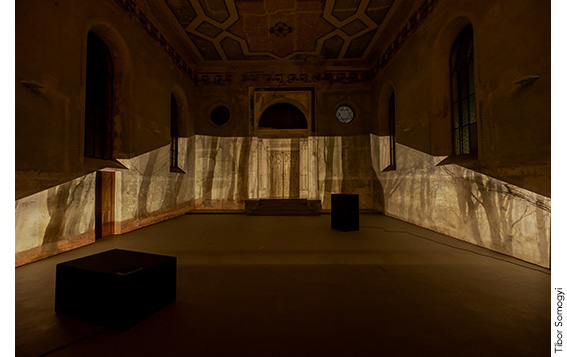|
This site-specific installation holds menace and beauty in a kind of cognitive dissonance. It is both a gesture of remembrance for those who have died in the war in Ukraine and a lament for the destruction of the natural environment that accompanies all wars. The title is from a poem by Anastasia Afanasieva, one of many contemporary Ukrainian writers exploring how – and if – poetry can respond to the Russian invasion of their country. Denise Hawrysio and John Wynne experimented together for a month in this former synagogue in Slovakia to ask the same question of art. The devastating effects of the war on nature are catastrophic, and mirror the simultaneous human tragedies wrought by this pointless aggression. As Yevheniia Zasiadko from Ecoaction, a Ukrainian environmental group says, “War affects our nature just as badly as our people and our infrastructure. However, this damage remains unseen and mostly ignored, for the environment is the silent victim.” In the lower gallery, a slow tracking shot of a forest is accompanied by powerful low frequency sounds that are sometimes more felt than heard. Wynne exploits the resonant frequencies of the space with shifting microtonal intervals that result in standing waves and beat frequencies that seem to carve and corrugate the very air we breathe. Floating in the unlocatable high frequencies are the sounds of a violin, played and recorded by Wynne in response to the remarkable acoustics of the synagogue. He was inspired by the many incongruous, heart-rending YouTube videos featuring Ukrainian soldier-violinists, one of which is projected in the upper gallery. The Women’s Gallery, upstairs, is more explicit. Hawrysio’s collages juxtapose images excised from old National Geographic magazines with contemporary war imagery from Ukraine. Unexpected links are invariably forged, producing an emotional – almost primordial – tug between revulsion and aesthetic appeal. Click to read a review by art critic Kati Havran
UK premiere at the Sound / Image Festival 2025, Greenwich, UK
|
|







